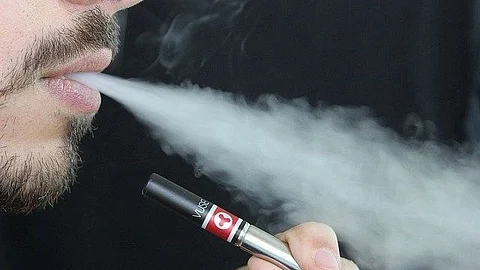

Electronic cigarettes, or ECs, contain nicotine, solvents, and flavor chemicals, and are especially popular among young adults. In 2020, the Food and Drug Administration, or FDA, banned cartridge-based flavored EC pods, but this ban did not extend to “disposable” flavored EC products, such as Puff ECs. Unfortunately, the chemical composition and toxicity of the fluids in Puff ECs are largely unknown.
Researchers at the University of California, Riverside and Portland State University have now examined 16 disposable Puff devices to determine their flavor chemicals, synthetic coolants, and nicotine concentrations. Synthetic cooling agents, like WS-23, provide a cooling sensation.
Using gas chromatography and mass spectrometry, the team identified 126 flavor chemicals in Puff EC fluids and tested how toxic these chemicals were on human bronchial epithelial cells. They report in the journal Chemical Research in Toxicology that the chemicals in disposable Puff ECs are at high levels and cytotoxic — or toxic to living cells.
“Our data support the regulation of flavor chemicals and synthetic coolants in Puff ECs to limit their potentially harmful health effects,” said Esther Omaiye, a former graduate student in the Environmental Toxicology Graduate Program and the first author of the research paper. “The high levels of nicotine, flavor chemicals, and synthetic coolants in Puff ECs, which exceed those used in other consumer products, bring into question the safety of Puff products.”
Prue Talbot, in whose lab Omaiye now works as postdoctoral researcher, said one area of regulatory concern with respect to ECs is the evolving use of novel chemicals in e-cigarette fluids.
“For years, we have been aware that EC designs are evolving,” said Talbot, a professor of cell biology who led the research team. “Only recently have we also realized that the chemicals used in EC liquids are likewise changing. These changes usually make the EC product more attractive to adolescents or attempt to circumvent FDA regulation — for example by using synthetic nicotine in lieu of tobacco derived nicotine to escape FDA regulation.”
According to Talbot, the synthetic coolant WS-23, developed for use in shaving cream, is now being included in EC liquids with little information available on its inhalation toxicology.
“Our work shows that the concentrations of WS-23 used in Puff ECs are high enough to produce adverse health effects with chronic use,” she said.
Other findings of the study are:
Puff ECs have much higher concentrations of synthetic coolants and flavor chemicals than JUUL ECs.
Although the inhalation risks remain unknown, EC manufacturers are increasing the use and concentrations of synthetic coolants, which are attractive to young users.
Talbot and Omaiye were joined in the study by Wentai Luo, Kevin J. McWhirter, and James F. Pankow of Portland State University in Oregon.
The research was funded by the National Institute of Environmental Health Sciences and the Center for Tobacco Products. Omaiye was supported by a University of California President’s Dissertation Year Fellowship.
The title of the research paper is “Disposable Puff Bar Electronic Cigarettes: Chemical Composition and Toxicity of E-liquids and a Synthetic Coolant.”(AS/Newswise)
Join MedBound - an ecosystem for students and professionals of medical and health sciences.
